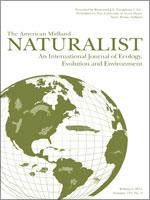Suzanne Sanders, Jessica Grochowski
The American Midland Naturalist 171 (2), 185-203, (1 February 2014) https://doi.org/10.1674/0003-0031-171.2.185
Measures of forest integrity often focus on only one or a small number of metrics (e.g., regeneration, soil organic layer depth). It is possible, however, to view forest integrity more holistically, using the species assemblages present as phytometers, or integrative measures of the complete set of drivers, stressors, and filters acting on the ecosystem. Thus, the species themselves express forest integrity. We collected extensive data on the overstory, understory, and groundlayer from 158 long-term vegetation monitoring plots in four U.S. national parks, within the Great Lakes basin. From these data, we calculated species richness and the modified Floristic Quality Index (mFQI), a measure of species' conservatism and habitat faithfulness. We also determined the proportion of species within categories of each of four separate ecological traits: growth form, life history, pollination mode, and nativity. In general we found lower mFQI values in parks with greater species richness. The proportions of species in categories within the life history and nativity ecological traits varied little among all four parks; proportions in categories for the growth form and pollination mode traits at Apostle Islands differed from the other parks, in having more woody species than any other growth form and more species pollinated abiotically than by other strategies. Across all four parks, our results are consistent with other assessments of species richness on islands and species richness in relation to habitat variability. Both the mFQI values and the taxa groupings in each of the four ecological traits are expected to be responsive to ongoing stressors of forest integrity. Because these techniques are both intuitive and relatively easily assessed, their application as effective gauges of change can apply not only in these four parks, but more broadly, throughout most natural areas.


